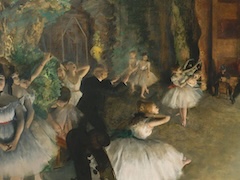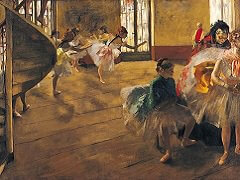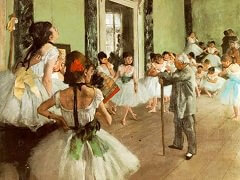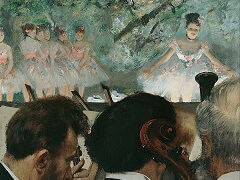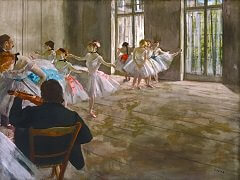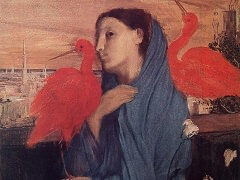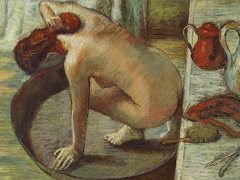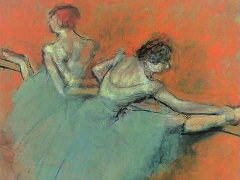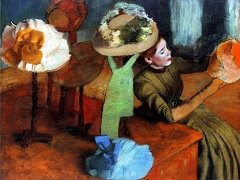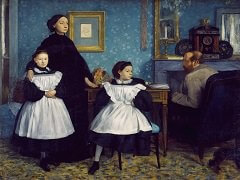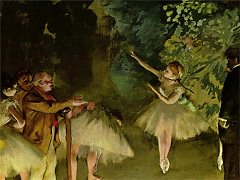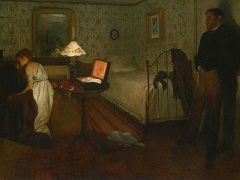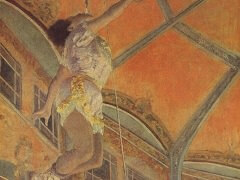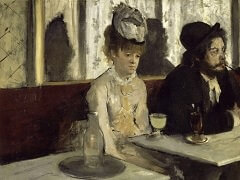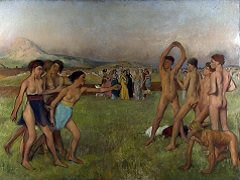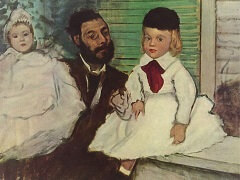Four Dancers, 1903 by Edgar Degas

Many of Degas' late works in pastel are more painted than drawn. He now used coat after coat of colored chalk, moistening them and piling up one surface on a nother until these works take on something of the quality of miniature frescoes. No longer are outlines and contours stressed; Degas goes back to the deep, sonorous colors of the Venetians, rather than to the Florentine draftsmen whom he earlier loved.
Such a pastel with its rich, brooding color expresses a new, passionate feeling in the artist. Nothing is more surprising than this final burst of romantic force in a man who had coolly spent most of his life in a search for classical perfection. As he intensified his composition, as he bent and dissected his drawing and heaped up crushed, jewel-like color upon color, Degas became, at the end of his career, a modern artist who through his Expressionism influenced both Bonnard and Rouault and many of the more creative colorists of our own day.

